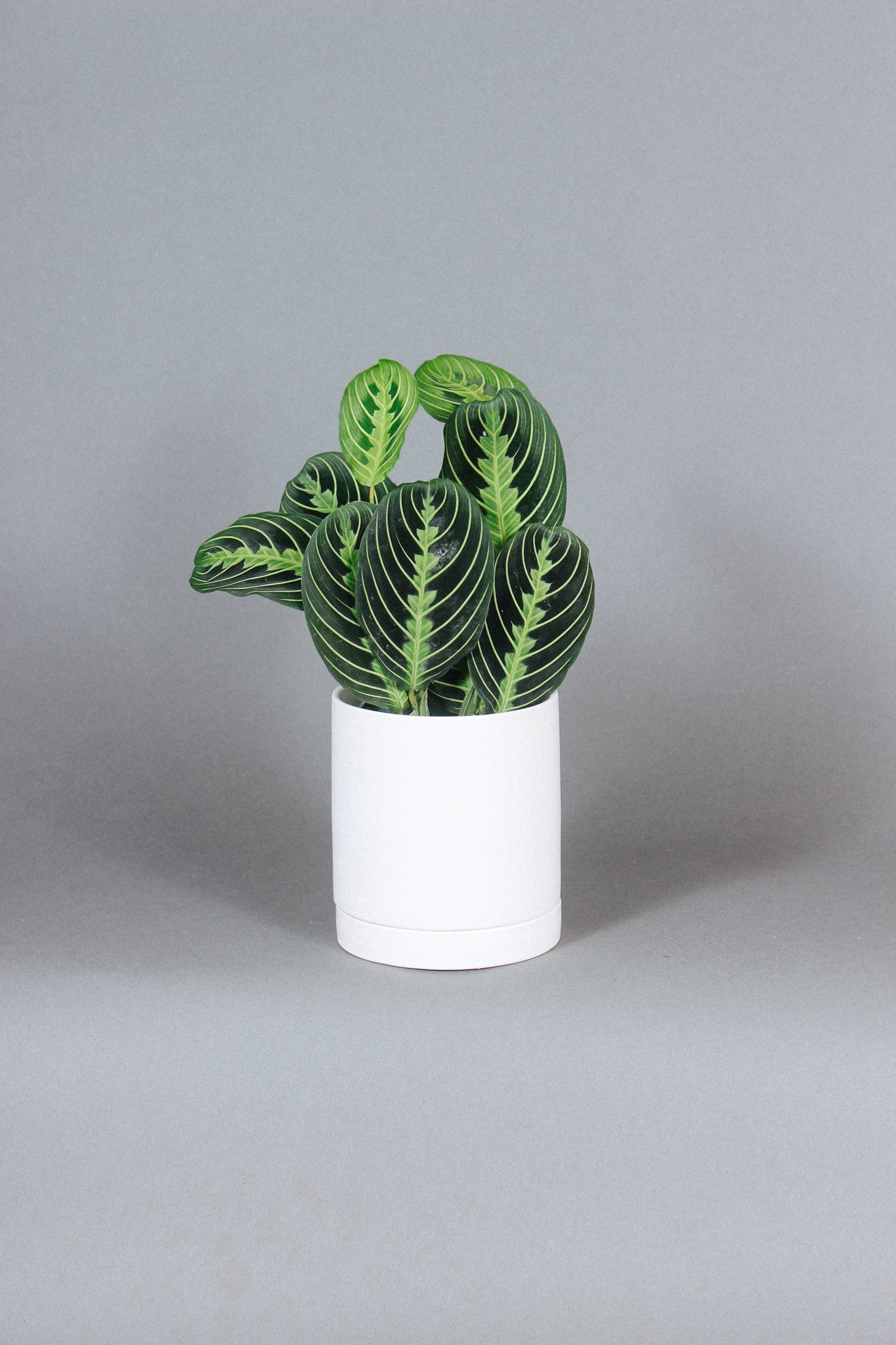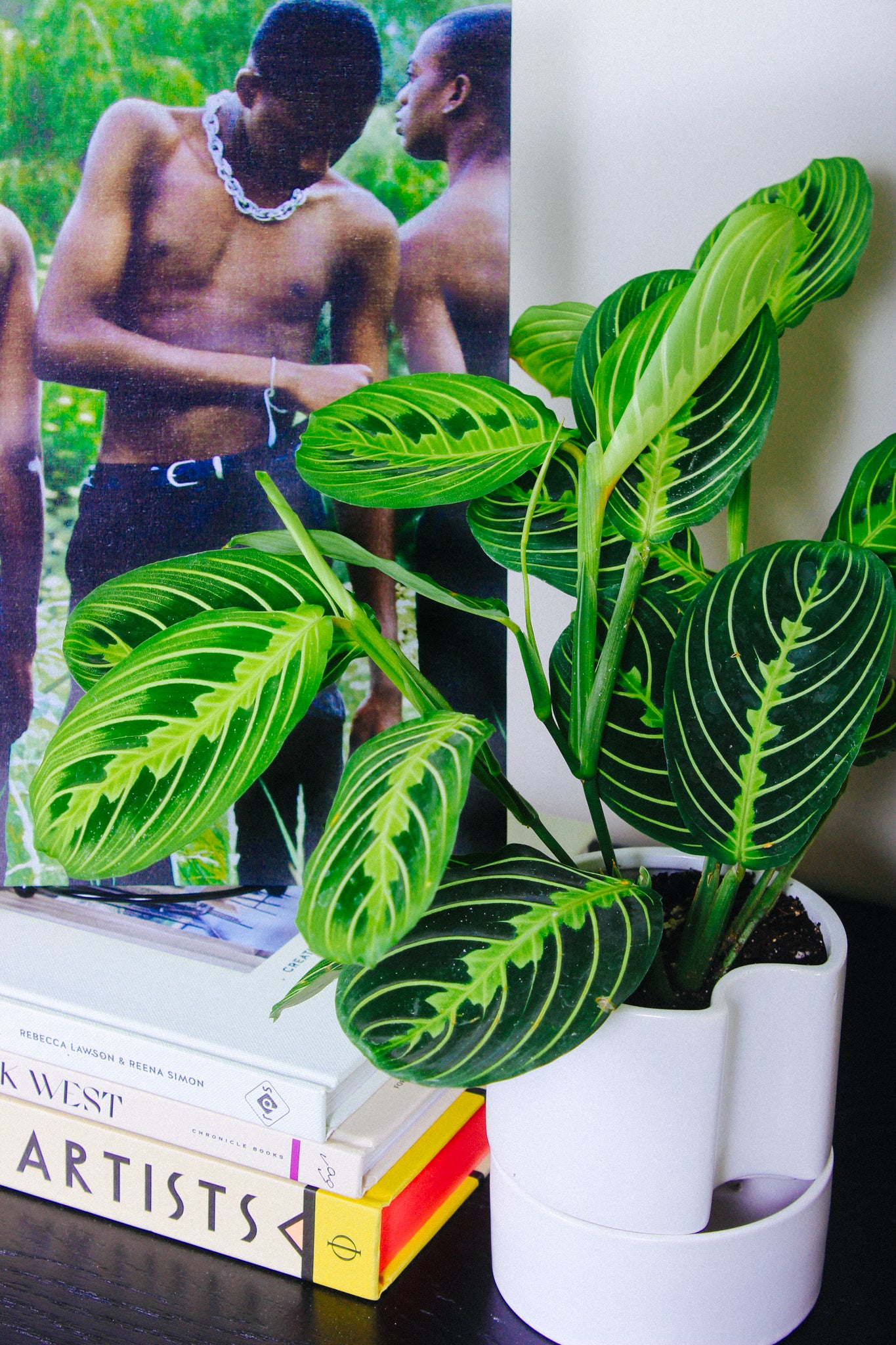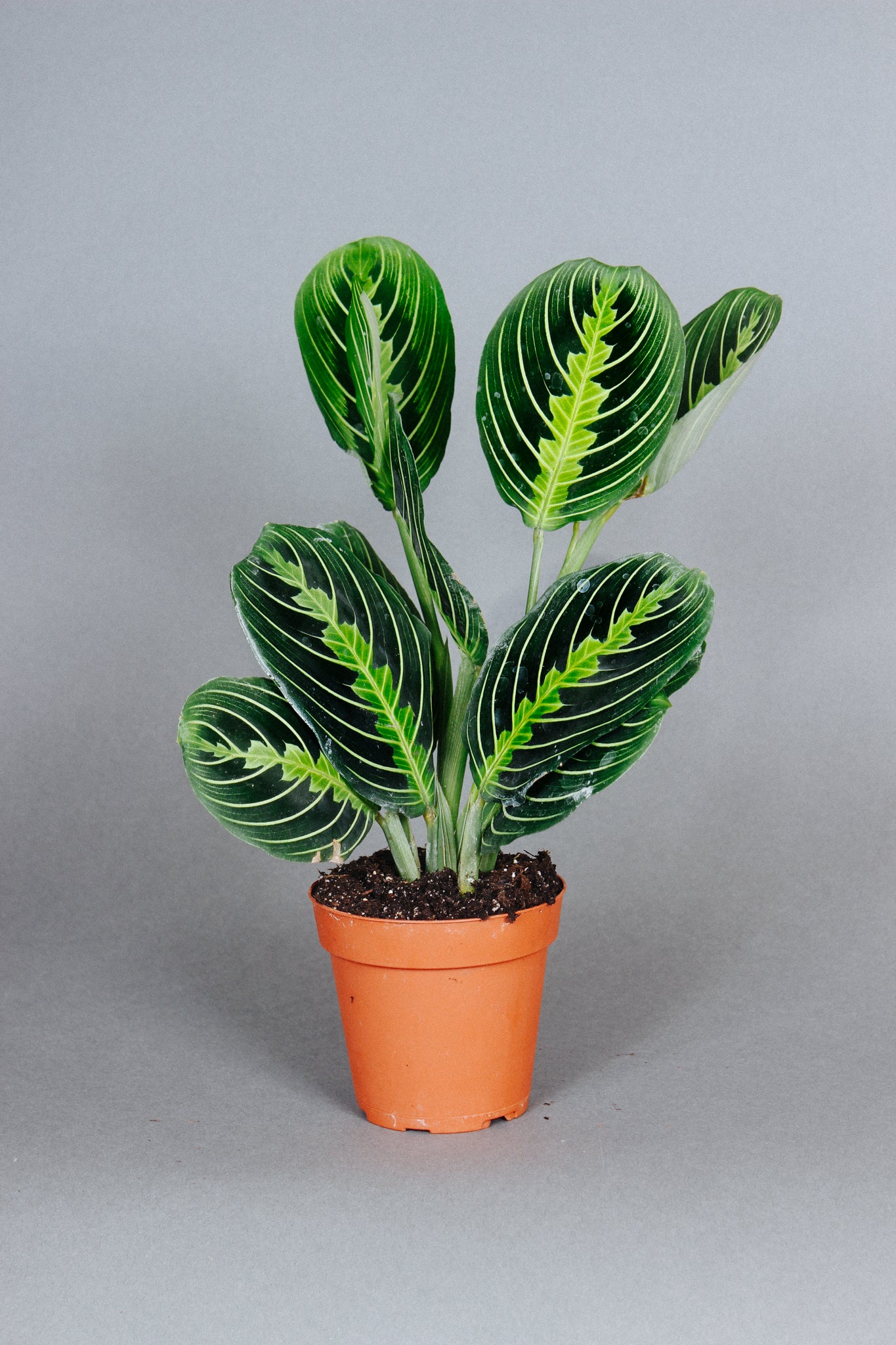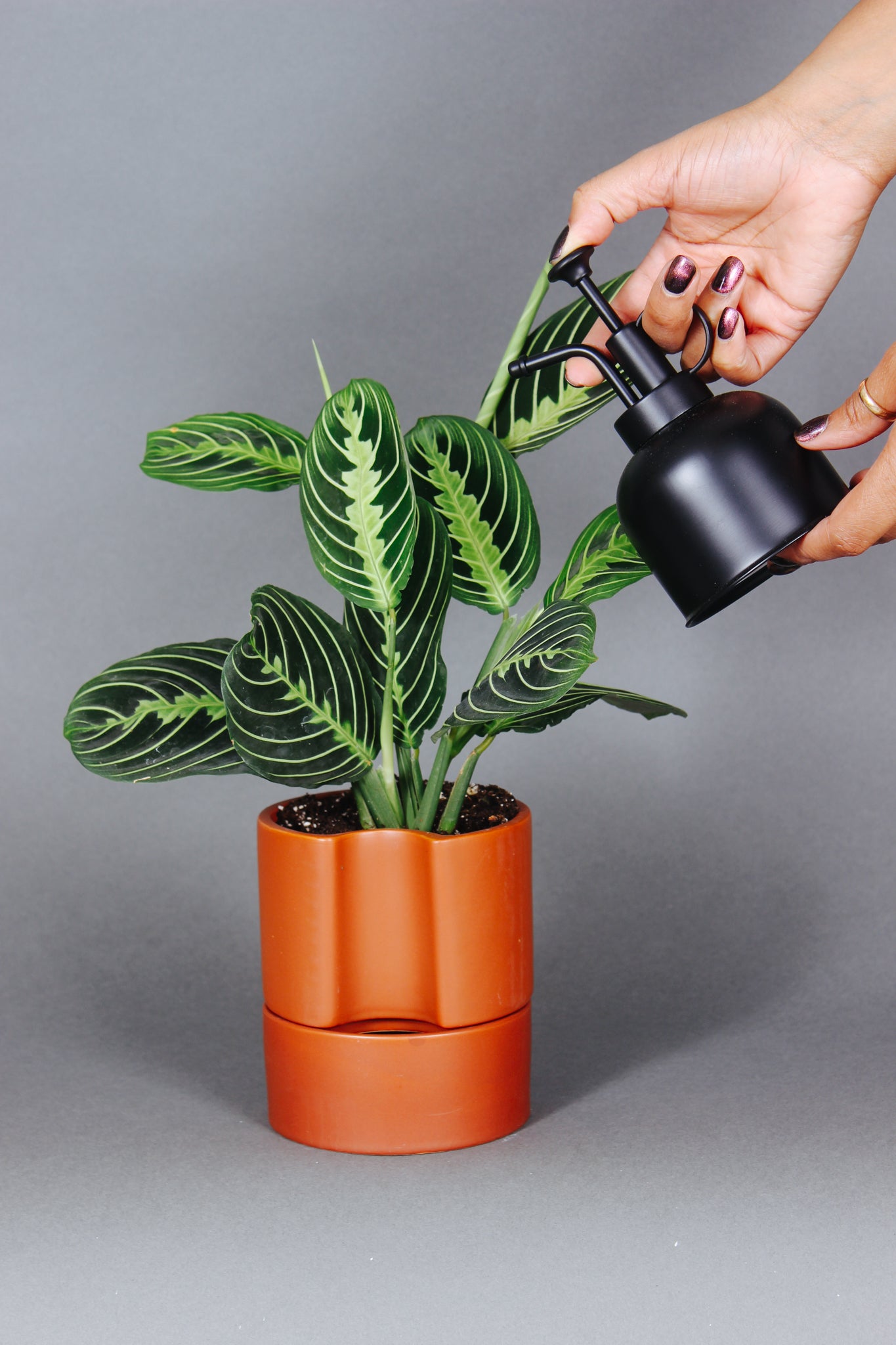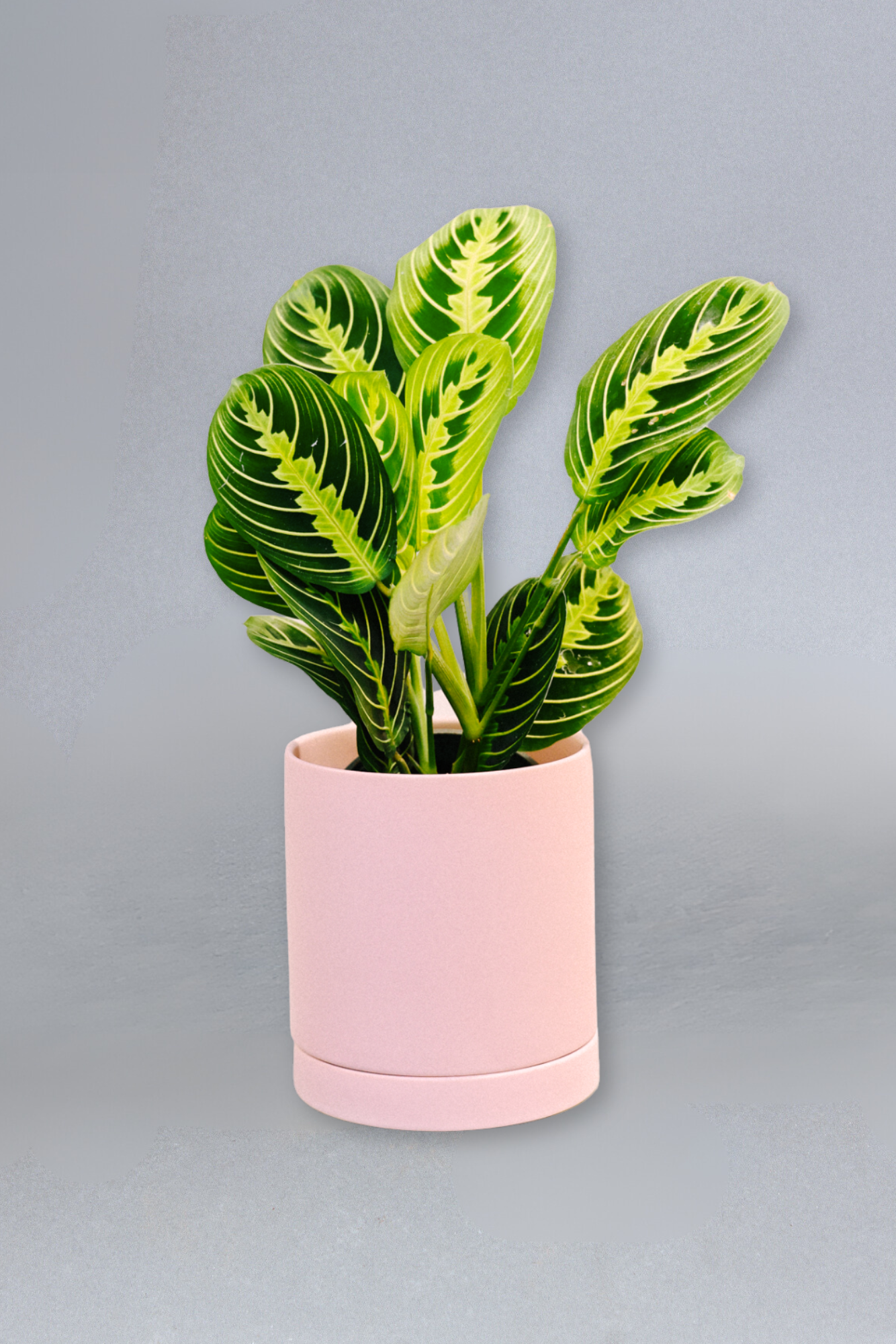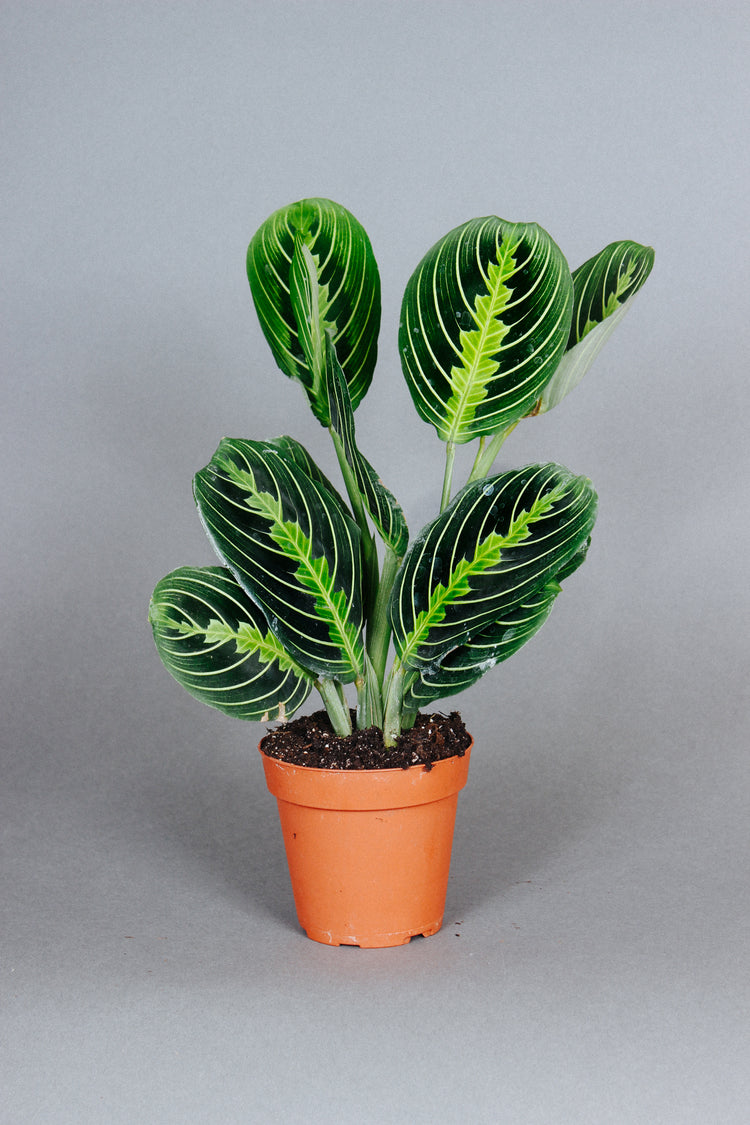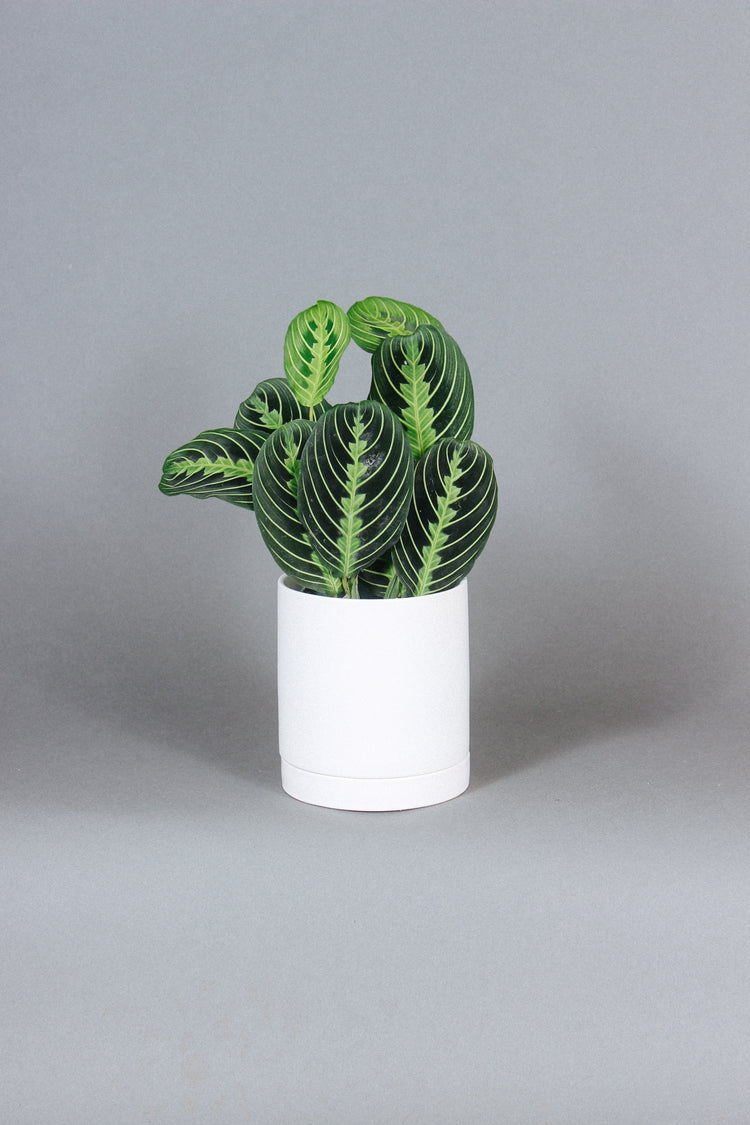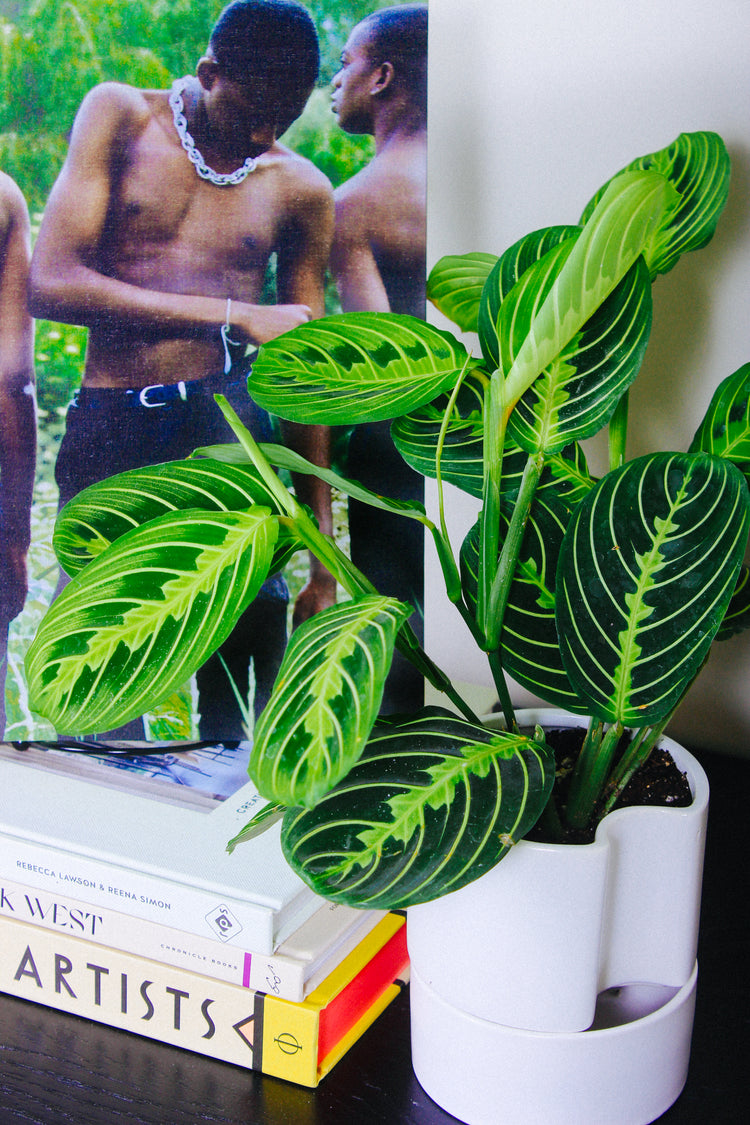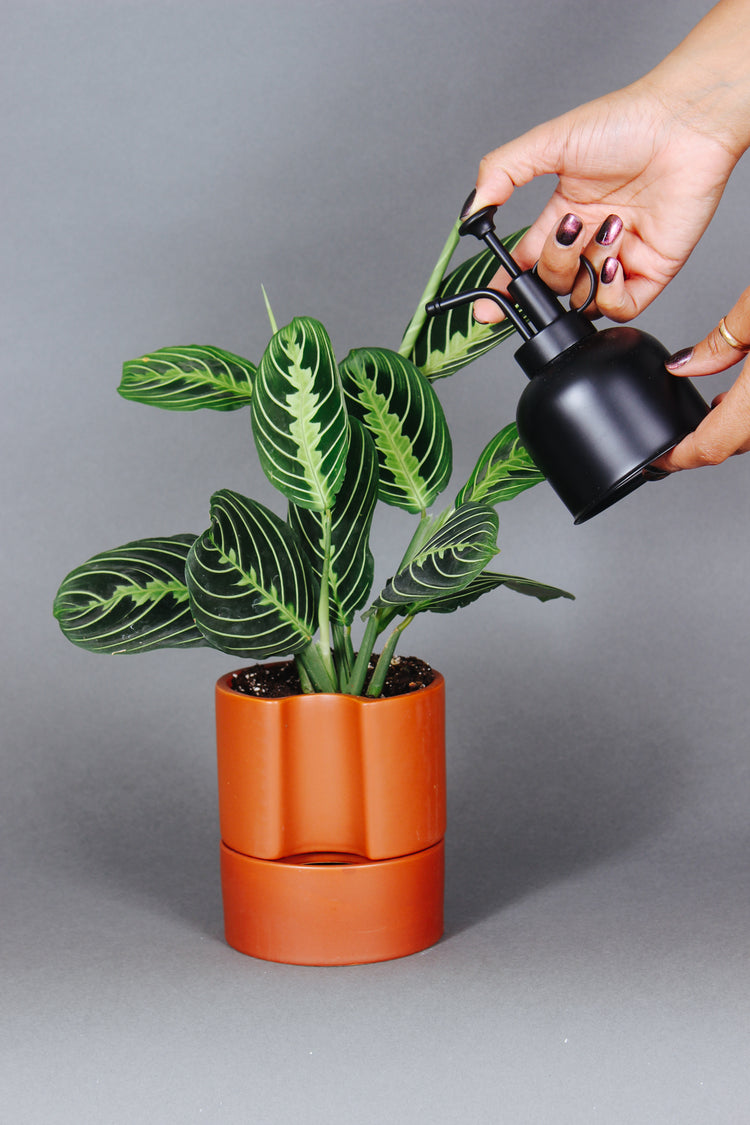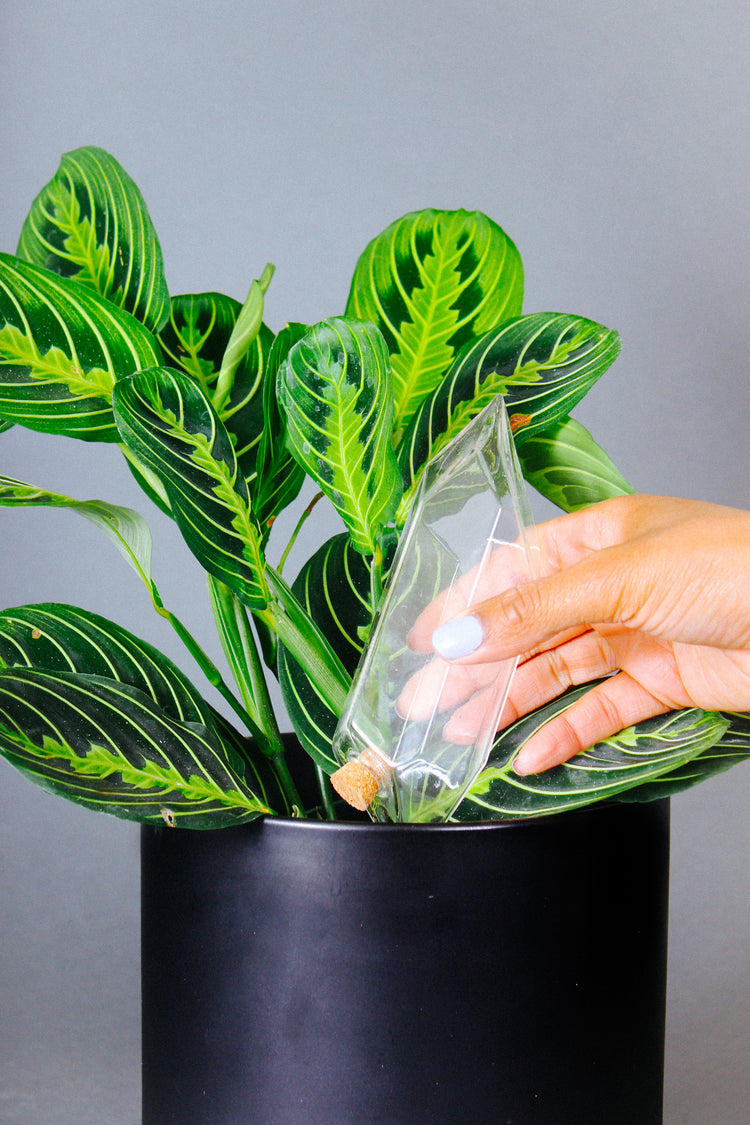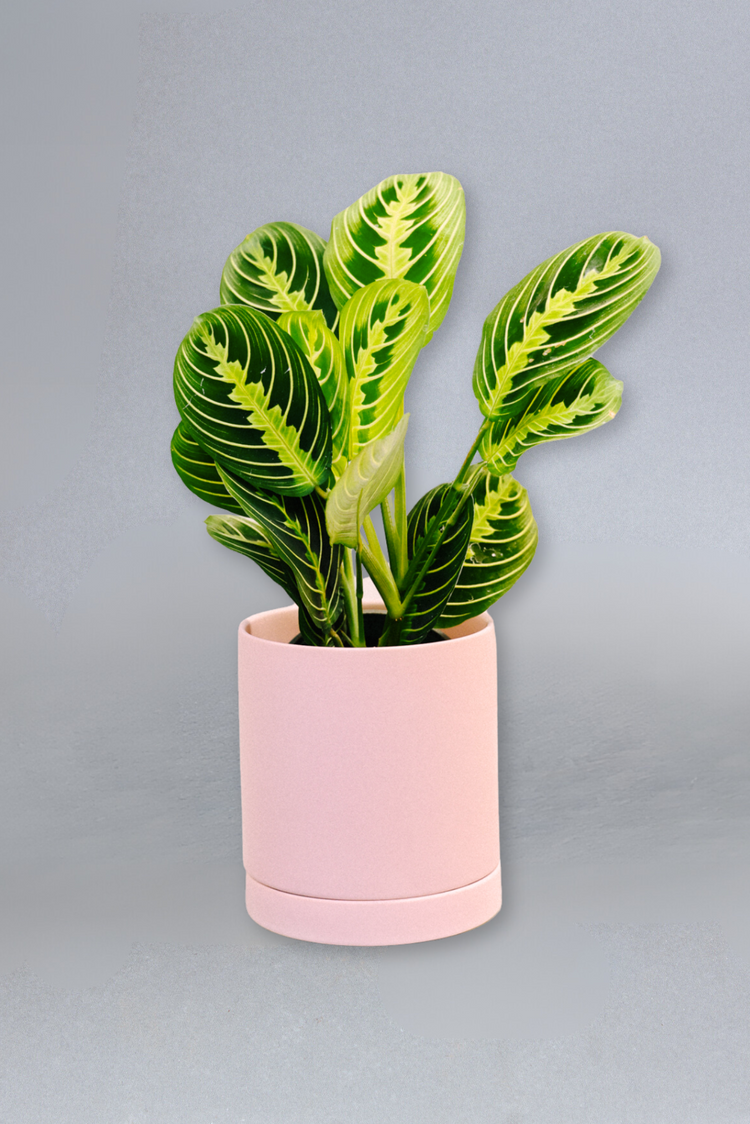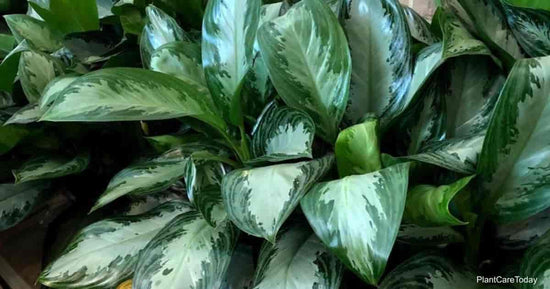Prayer Plants are known for the fascinating daily performance of opening and closing their leaves, scientifically known as a nastic movement. In the case of Maranta and Calathea plants, this act is inspired by the day’s natural cycle and light exposure.
As morning light filters into your home, Prayer Plants gracefully open themselves up to the start of the day. The pigmented leaves absorb moisture and light in their environment, which keeps them healthy and vibrant. When your home darkens at nightfall, your plant naturally folds its leaves shut.
For this reason, Prayer Plants have adopted symbolic meaning in our lives as reminders of gratitude and new beginnings. It’s believed that the ability to open and close developed to maximize light and nutrients from the rainforest floor while protecting themselves from nighttime predators.
How Are Maranta and Calathea Plants Different?
Maranta and Calathea plants both belong to the Marantaceae family and have similar care needs, however, Marantas are considered to be “true” prayer plants. This is because their leaves have “joints” which allow them to lift up and down and also move widely throughout the day. The nastic movement of Marantas follows the cycle of day and night. Set up a time-lapse on your phone for a few hours to see for yourself!
Calatheas are not equipped with these “joints” and are limited to opening their leaves downward and folding them upright. Their nastic movement is in response to light exposure, rather than a natural rhythmic cycle. You might even catch the sound of their leaves against the air when they close themselves shut.
Both plants' performance is reminiscent of hands folded in prayer to start and end the day. In yoga practice, “heart-opening poses” open up the chest and breath. These poses also help reduce uncomfortable sensations related to anxiety and stress while creating a strong, safe space within ourselves and our bodies. No matter your beliefs or practice, inviting Prayer Plants into your home can encourage daily care practices of body and spirit.
Grounded Prayer Plant Subscription
Our Prayer Plant Subscription is meant to encourage a meaningful relationship with plants and directly impact your connection to nature. As we know, connecting with nature offers many benefits to physical and mental health. Prayer Plants are befitting for those going through a life transition, embarking on a new journey, and all of us who could use a daily reminder to look for the sweet, small moments that life has to offer.
As intermediate-level plants, they will react strongly to delayed or missed care. In particular, they need consistently moist soil which requires watering as soon as the top 1-2 inches of soil have dried. Self-watering planters are ideal for Calathea and Marantas to ensure they receive consistent and regular moisture. Depending on your environment, the water reservoir can be refilled about every week to ten days. To maintain the beauty of the leaves, we recommend avoiding tap water!
Here are our foolproof tips for caring for your Prayer Plant!
- Check the water reservoir and soil moisture with your finger to assess dryness before watering.
- Provide high humidity through frequent misting or add a humidifier nearby.
- Keep out of direct sunlight. Indirect placement in a medium or bright room is best.
- Use rain or spring water! Tap water should always be left out overnight before using.
- If your plant has stopped moving daily, it likely has an unmet need or its environment has changed.
Have any questions about caring for your Prayer Plants? You’re not alone! Maranta and Calathea plants are a hot topic when it comes to plant care! Email us at customerservice@grounded-plants.com so we can provide direct support!
Follow us on Instagram and TikTok!




